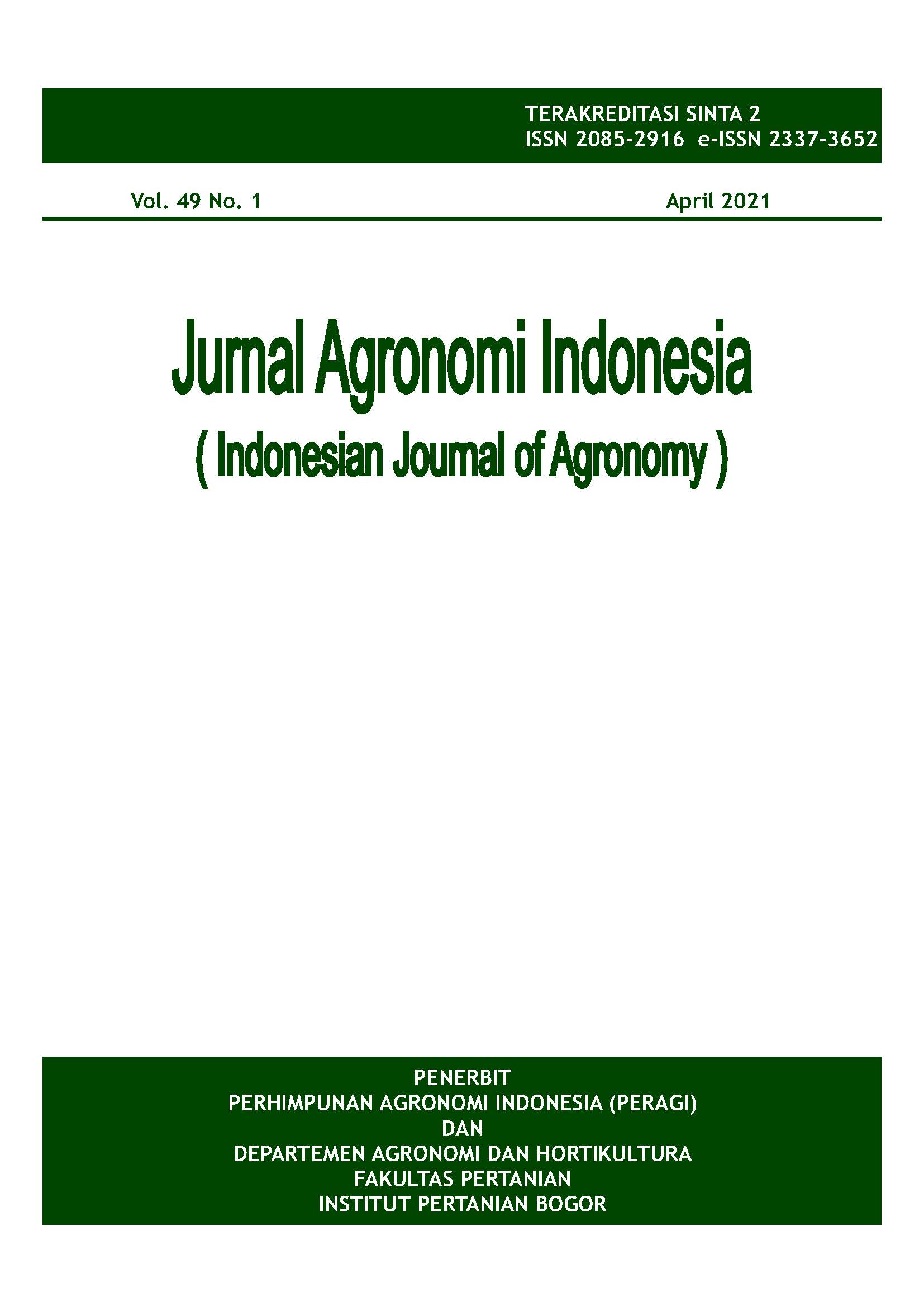Sterilisasi dan Pertumbuhan In Vitro Tunas Aksilar Pepaya Kultivar Callina dan Caliso
Abstract
Papaya medium and small types have been very popular in Indonesia since a decade ago. Most seed-derived papaya plants make a little profit because of heterogeneity and genetic variation due to cross-pollination, so that in vitro culture is needed. The research was conducted at the Tissue Culture Laboratory of the Center of Tropical Horticulture Studies, IPB University, from November 2018 to January 2020. The explants were axillary shoots of papaya cultivars Callina and Caliso which were 2 weeks old. The experiment was set up in a factorial randomized complete block design. This study consisted of two experiments: a) the first experiment aimed to determine the effect of sterilization methods, with the source of explants (greenhouse and field) and sterilization methods (M1, M2, M3, and M4) as factors, and b) the second experiment aimed to optimize the BAP and GA3 concentration on shoots proliferation, using the concentrations of BAP 0.0, 0.5, 1.0, 1.5, and 2.0 mg L-1and GA3 0.0, 0.3, and 0.4 mg L-1. The results showed that the explants from the greenhouse on M4 sterilization method produced the lowest contamination levels of 19.9% for Caliso and 29.9% for Callina. The best media to produce optimum shoot elongation were BAP 0.5 mg L-1 and GA3 0.3 mg L-1 for Caliso, and BAP 0.5 mg L-1 and GA3 0.4 mg L-1 for Callina with an average height of 1.6 and 1.8 cm, so that that shoots can be transferred to the rooting stage.
Keywords: Benzyl Amino Purine, Carica papaya, contamination, gibberellic acid, sterilization













